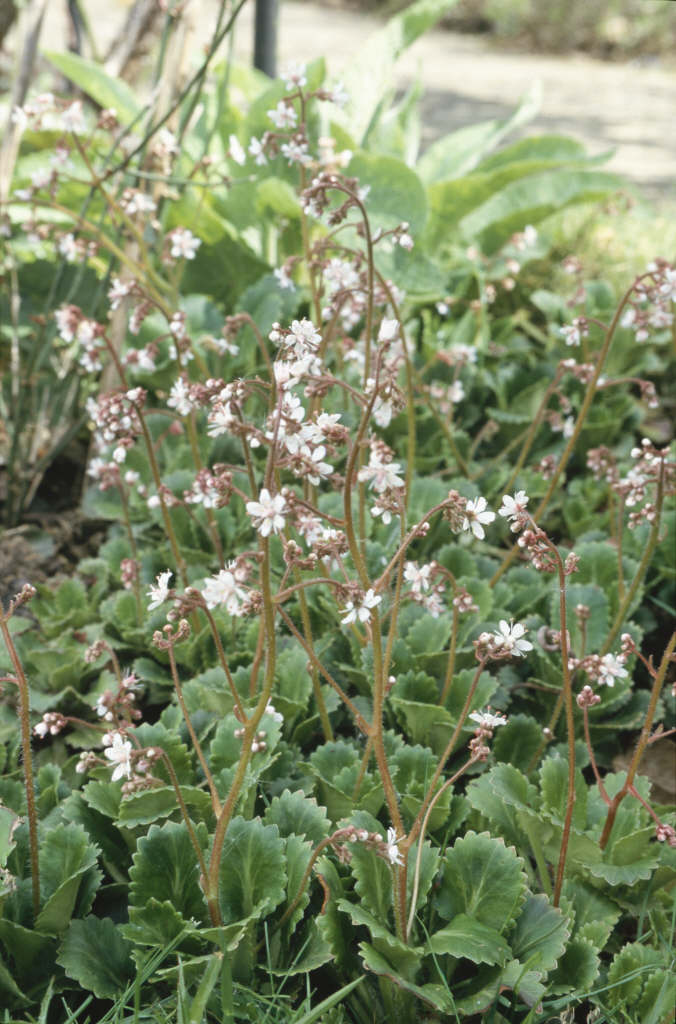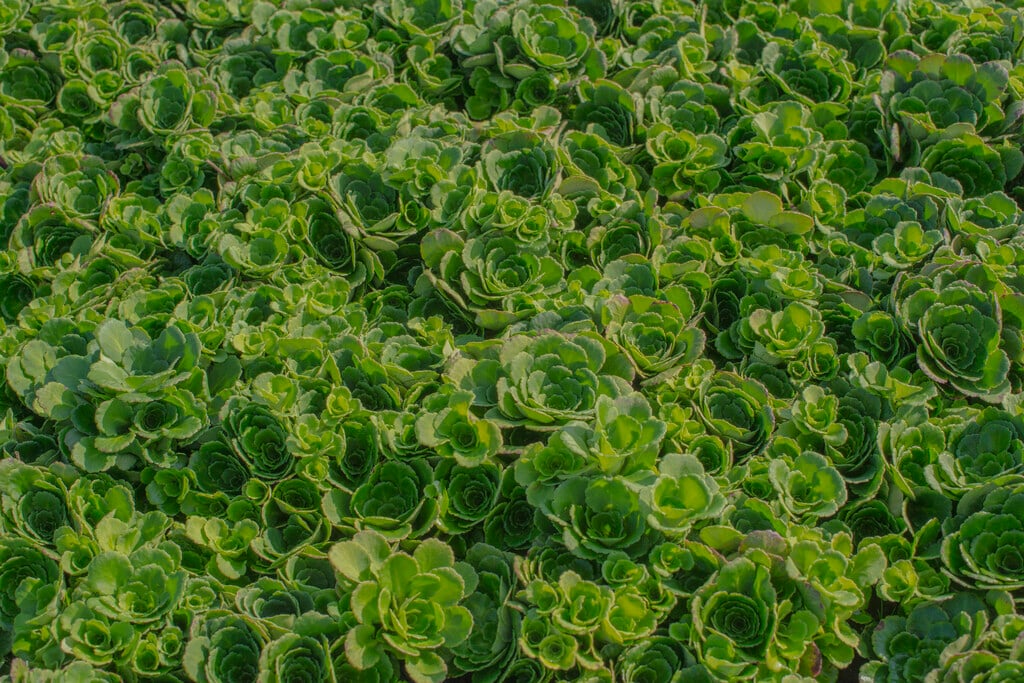Saxifraga × urbium (11)
London pride
An evergreen perennial to 30cm in height, forming wide mats of rosettes of spoon-shaped, long-stalked leaves with scalloped margins. Small pink-flushed white flowers are borne in lax panicles from early summer
Size
Ultimate height
0.1–0.5 metresTime to ultimate height
2–5 yearsUltimate spread
0.5–1 metresGrowing conditions
Moisture
Moist but well–drainedpH
Acid, Alkaline, NeutralColour & scent
| Stem | Flower | Foliage | Fruit | |
| Spring | Green | |||
|---|---|---|---|---|
| Summer | Pink White | Green | ||
| Autumn | Green | |||
| Winter | Green |
Position
- Full shade
- Partial shade
Aspect
North–facing or West–facing or East–facing
Exposure
Exposed or Sheltered Hardiness
H5Botanical details
- Family
- Saxifragaceae
- Native to GB / Ireland
- No
- Foliage
- Evergreen
- Habit
- Matforming
- Genus
Saxifraga can be annuals, biennials, evergreen or herbaceous perennials, mostly mat-forming in habit, with simple or palmately lobed leaves and starry or rounded flowers which may be solitary of in panicles or cymes
- Name status
Correct
- Horticultural Group
- Gymnopera section saxifrages are perennials forming rosettes of evergreen leaves, with leafless stems bearing panicles of small, 5-petalled flowers
How to grow
Cultivation
Easy to grow in any type of soil or situation but ideal for deep or partial shade
Propagation
Propagate by division in spring or detach rosettes and root in late spring to early summer
Suggested planting locations and garden types
- Cottage and informal garden
- City and courtyard gardens
- Flower borders and beds
- Garden edging
- Ground cover
- Underplanting of roses and shrubs
Pruning
Cut off flower stems after flowering
Pests
May be susceptible to vine weevil
Diseases
Generally disease-free
Love gardening
Sign up to receive regular gardening tips, inspiration, offers and more
View our Privacy Policy
Get involved
The Royal Horticultural Society is the UK’s leading gardening charity. We aim to enrich everyone’s life through plants, and make the UK a greener and more beautiful place.

